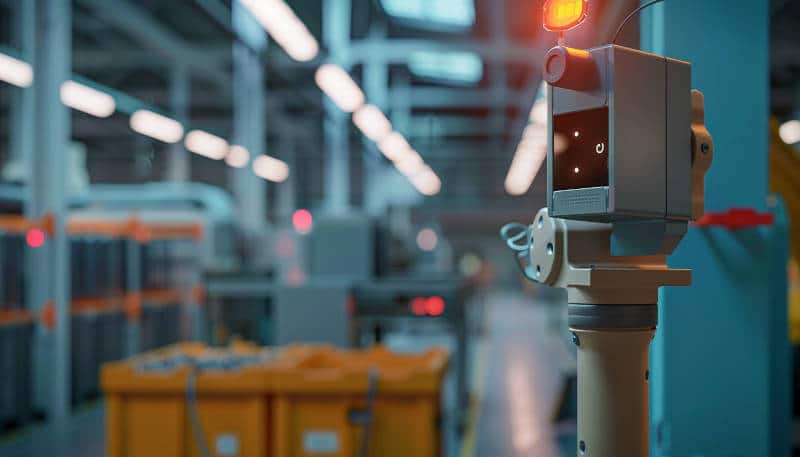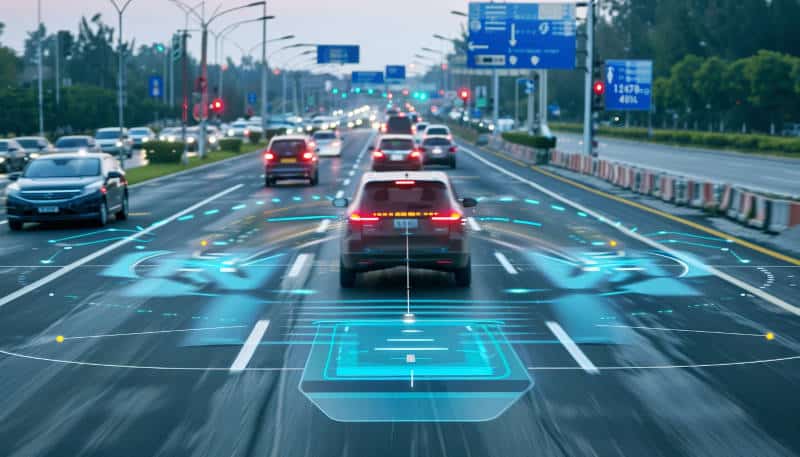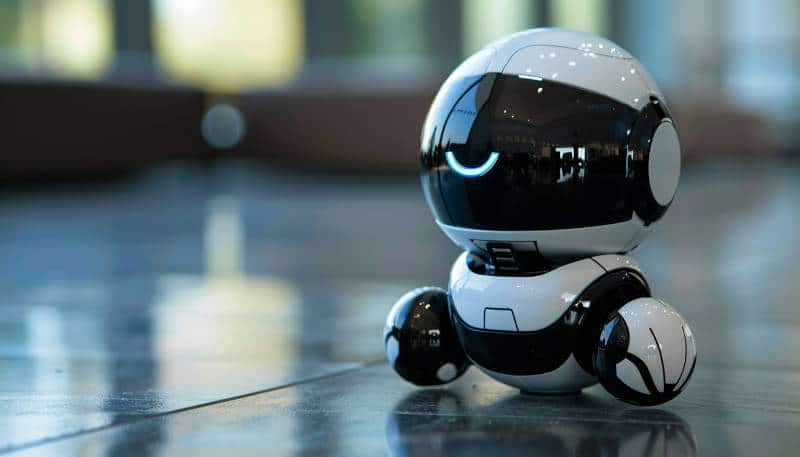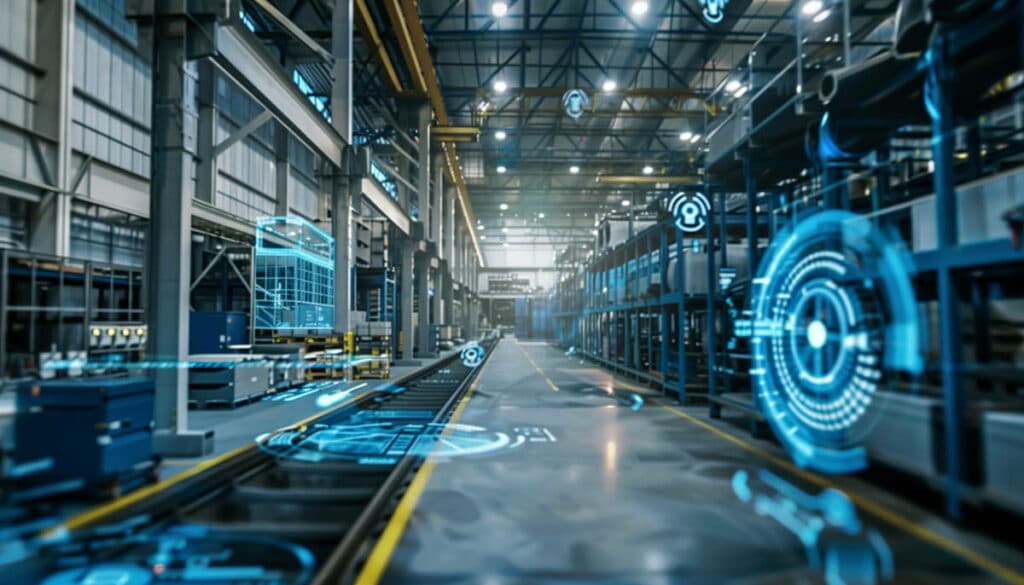Smart sensors are revolutionizing the way we collect and analyze information, inaugurating an era where raw data is instantly transformed into valuable insights for informed decision-making. Discover everything you need to know about these high-tech devices!
Meeting environmental challenges, optimizing industrial processes, enhancing citizens’ quality of life… today we face complex issues, demanding precise, real-time information.
For a long time, the only available solution for collecting this information was traditional sensors that simply gathered raw data to be transmitted and processed by external systems.
This led to delays, and thus risks of inaccuracy. That time is over, thanks to the emergence of devices of a new kind offering a true revolution in data collection and analysis: smart sensors.

What are they?
It is a device capable of receiving inputs from the physical environment, and using its computing resources to perform predefined functions according to the type of information detected to process and transmit data.
Compared to traditional sensors, they enable a more precise and automated collection of environmental data, with less erroneous noise among accurate information.
Combining embedded processing capabilities and advanced connectivity, these miniature devices can not only detect and measure with precision but also analyze information on-site to extract actionable data instantly.
From monitoring industrial equipment to optimized management of urban resources, including remote monitoring of health parameters, “Smart Sensors” open up a multitude of new possibilities.
They enable the anticipation of problems, making the best decisions, and continuously optimizing processes. So, how does this revolutionary technology work?
Anatomy of a smart sensor: Understanding the components and their operation
Several key elements give smart sensors their unique capabilities. First, the physical sensor converts a physical quantity into a measurable electrical signal.
This signal is then processed by an embedded microcontroller or processor. It performs calculations, analyzes data, and makes decisions based on predefined algorithms.
Another essential aspect is connectivity. Thanks to communication interfaces such as Bluetooth, WiFi, or cellular networks, sensors can transmit the collected and analyzed data to control systems or storage and processing platforms.
There are also self-diagnostic functionalities. They allow Smart Sensors to detect and report potential failures.
Self-calibration capabilities serve to maintain optimal precision. The most advanced models even have Machine Learning capabilities that give them the ability to adapt and improve over time.
There is a wide variety of smart sensors to measure different physical quantities. Among the most common are temperature, pressure, humidity, motion, gas, light, and sound sensors.
By now, you might be wondering what the applications of this technology are. That’s what you will discover in the next chapter.

What are they used for? What are the areas of application?
Smart sensors are used in many sectors to meet challenges with innovative solutions.
In industry, they are used for equipment monitoring, quality control, and process production optimization.
Because of their ability to detect anomalies and prevent breakdowns, they help to reduce downtime and improve productivity.
In the field of smart cities or Smart Cities, these sensors play a key role in infrastructure management, air and water quality monitoring, and waste and energy management.
The valuable data they provide helps to optimize resources and ultimately improve citizens’ quality of life.
The healthcare sector also greatly benefits from this innovation, particularly in wearable medical devices. They allow real-time monitoring of patients’ vital parameters, facilitating remote surveillance and rapid intervention when necessary.
But that’s not all: in precision agriculture, smart sensors are used for environmental condition monitoring such as soil moisture, temperature, and nutrient levels.
All of this data enables optimized crop management, more efficient resource use, and a reduction in environmental impact.
This is just the beginning, as other emerging areas like robotics, autonomous vehicles, and the IoT present new opportunities for using these sensors and pave the way for innovative and transformative applications…
A beneficial technology... with its own set of challenges to overcome
One of the main advantages of smart sensors is undoubtedly their ability to collect and analyze data in real-time for an immediate understanding of the monitored environment and process.
This allows for quick decision-making and increased responsiveness: two essential capacities in many fields.
The embedded processing abilities, in turn, provide smart sensors with more accurate and reliable measurements than traditional devices.
They can compensate for errors, filter out aberrant data, and self-calibrate to ensure maximum data quality.
Another major strength is the reduction in maintenance and operating costs. Self-diagnostic features allow for rapid detection of potential failures and thus avoid costly downtime and unexpected maintenance interventions.
Moreover, these next-generation sensors enable the automation and optimization of processes. By analyzing data in real time, they can initiate automatic corrective actions or provide valuable information for optimizing operations.
Nonetheless, there are several challenges yet to be overcome. Energy consumption and battery life remain among the main drawbacks of smart sensors, particularly for wireless applications or environments that are difficult to access.
To address this, designers must find a balance between performance and battery longevity. Additionally, data security and privacy are also major concerns.
It’s important to remember that Smart Sensors collect and transmit sensitive data, which must be protected against unauthorized access, cyber attacks, and privacy breaches.
Another crucial issue is interoperability and standardization. With the proliferation of smart sensors from different manufacturers, it has become imperative to establish common standards and protocols to ensure seamless communication and integration between systems.

Furthermore, the costs of developing and deploying sensors can be high, particularly in the case of custom solutions or large-scale applications.
Therefore, it’s very important to properly evaluate the return on investment and find ways to reduce costs while maintaining high performance levels.
Clearly, continued research and development efforts are essential to fully harness the revolutionary potential of this technology.
The crucial importance of an appropriate regulatory framework
The widespread deployment of smart sensors raises significant regulatory and ethical questions.
In fact, a solid and appropriate regulatory framework is indispensable to ensure responsible and sustainable use of this technology.
One of the main issues concerns the protection of privacy and personal data. These sensors collect and transmit sensitive data that could be misused or exploited unethically.
That is why strict regulations on the collection, storage, and use of data must be established with special attention paid to respecting consent and confidentiality.
Another major concern is data security and resilience in the face of increasingly numerous cyberthreats. These connected sensors transmit critical information and are therefore potential targets for hackers.
Stringent security standards, as well as constant protection and monitoring measures, are therefore mandatory to prevent unauthorized access and malicious attacks.
Often neglected, issues of equity and non-discrimination also need to be addressed. Smart Sensor technology must not be used in a way that perpetuates or reinforces existing inequalities.
This is just as valid in the health domain as it is in employment or access to public services. Furthermore, the regulatory framework must also encourage innovation while ensuring ethical and responsible practices.
It is therefore necessary to find a balance between promoting technological development and protecting the fundamental rights and values of society!
Outlook for the future: What does the future hold for smart sensors?
Although they already offer tremendous possibilities, smart sensors are still in their infancy. In the future, numerous trends and innovations are expected.
The emergence of interconnected sensor networks, combining data from multiple sources, will provide an even more complete and precise understanding of the monitored environment or process.
Similarly, the integration of Machine Learning and artificial intelligence will enable a more sophisticated data analysis and a dynamic adaptation to changing conditions.
These self-learning and real-time optimization capabilities will open a new myriad of perspectives in numerous fields.
Furthermore, the development of embedded AI and specialized chips for processing data at the source should improve the performance and energy efficiency of Smart Sensors while continuing to reduce their size and cost

Conclusion: Smart sensors, a stepping stone to a sustainable and connected future
More than just a mere innovation, smart sensors constitute a major technological advance that is altering the way we interact with our environment and our systems.
They offer innovative solutions to tackle a wide range of challenges across various sectors like health, agriculture, and Smart Cities, and are set to evolve further with advancements such as AI.
Responsible utilization of their potential can lead us toward a smarter, more efficient, and sustainable future.
To learn how to leverage data collected by smart sensors and gain expertise in data science, you might consider DataScientest.
Our range of courses will equip you with all the necessary skills to become a Data Analyst, Data Engineer, Data Scientist, or any other role in this burgeoning field.
You will explore, among other subjects, the Python programming language, Machine Learning, DataViz, databases, Business Intelligence, and cloud computing platforms such as AWS and Microsoft Azure.
Upon completion of the program, you will receive a state-recognized diploma and an industrial certification that will validate your expertise to potential employers.
All our training programs are available through BootCamps, work-study programs, or continuous learning, and our institution qualifies for CPF funding. Explore DataScientest now!
You are now well-informed about smart sensors. For more information on this topic, explore our guide on the Internet of Things and our guide dedicated to autonomous vehicles.










